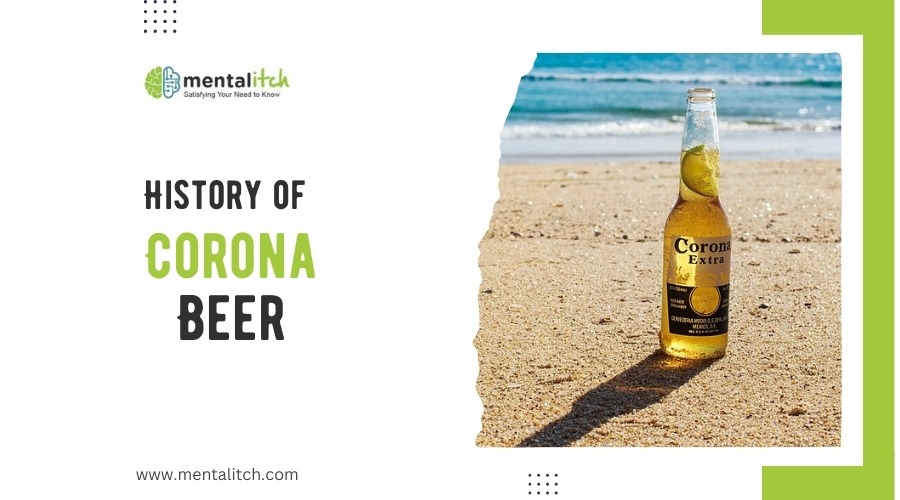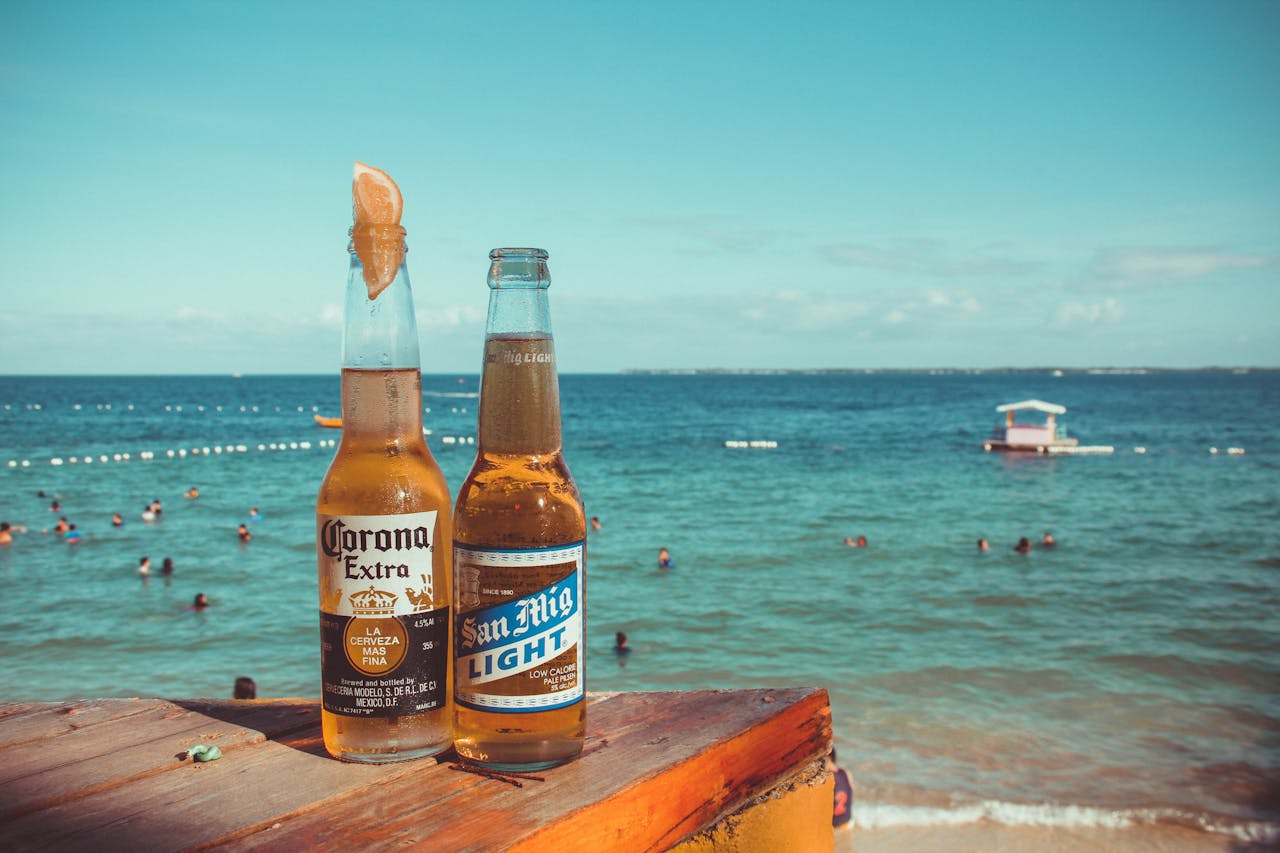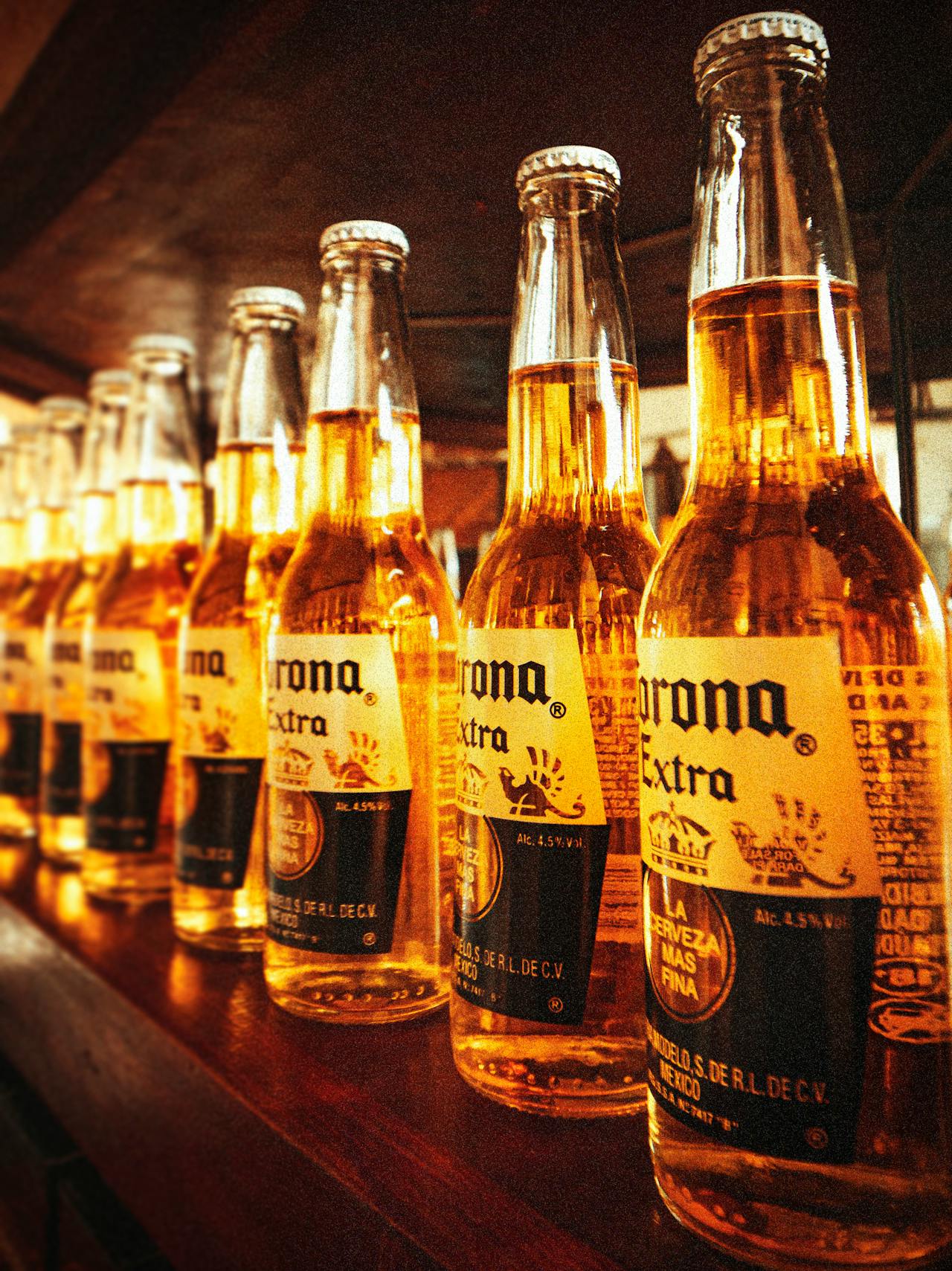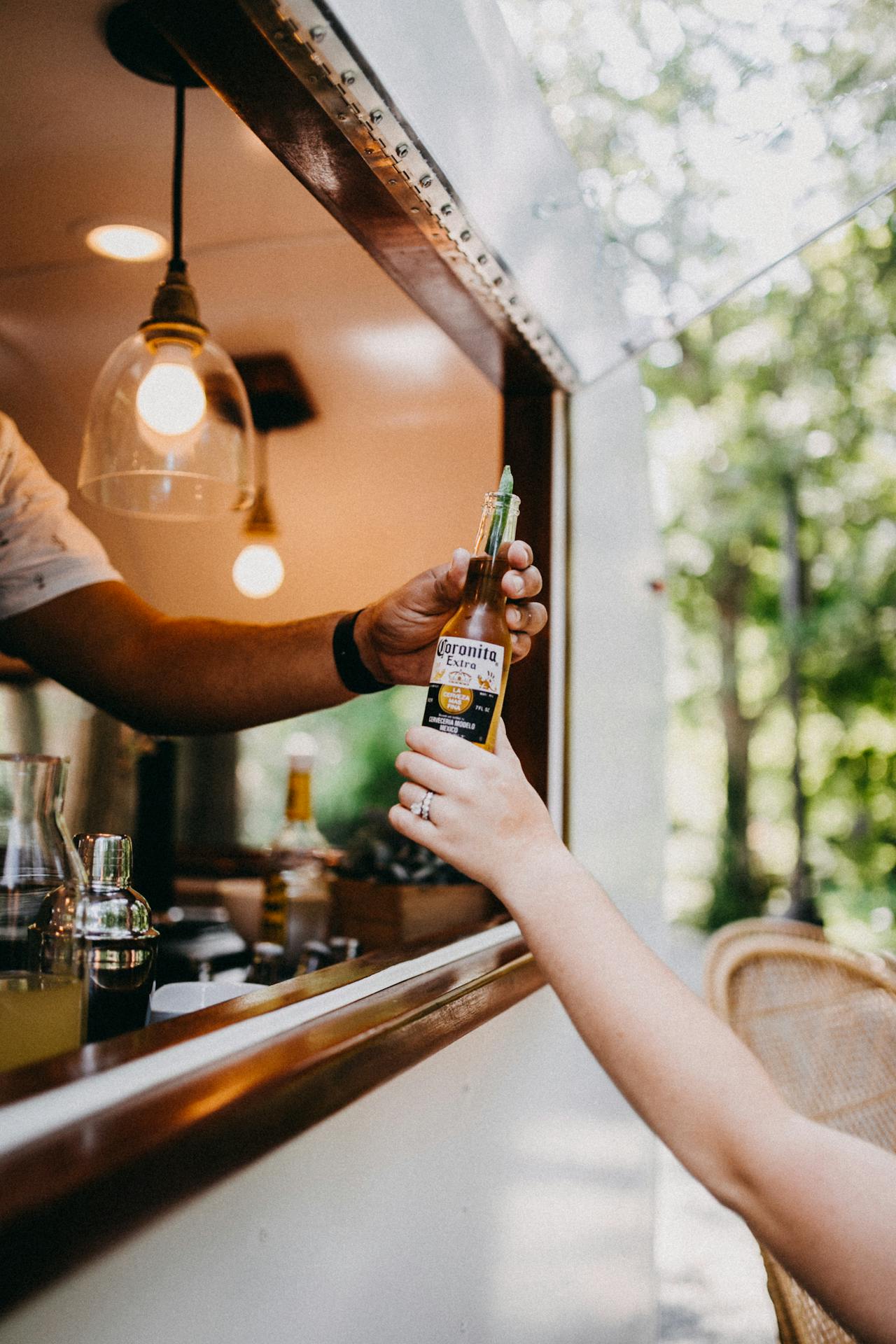When you see of an image of a beer bottle with a wedge of lime or lemon stuck into its mouth, you automatically know what beer brand it is. Yes, it is Corona beer. Corona Extra and Corona Light are the beer maker’s best sellers, especially in the United States. It is currently one of the top-selling beers worldwide.
The Origins of Corona Beer
If you’re curious where Corona Beer originated, this article hopes to give you more historical awareness about your favorite beverage.
In the early 20th century, Mexico was home to approximately 36 beer makers. The U.S. Prohibition era in the 1920s played a crucial role in the growth of the Mexican beer industry, as it led to the opening of new breweries along the U.S.-Mexico border. Existing breweries also moved closer to the border, turning into tourist attractions where Americans could enjoy beer legally.
The U.S. Prohibition not only led to a surge in American tourists seeking alcohol in Mexico but also stimulated the growth of the Mexican beer industry as a whole. Breweries that were strategically located near the border benefited the most, as they could easily cater to the influx of American visitors. This period marked a pivotal moment in the history of Mexican beer, setting the stage for future growth and international recognition.
Like many of the beer recipes that landed on the Americas, most particularly the United States, Corona’s own unique concoction is of German origin, as most of the brewers at that time were German immigrants. It first came in 1925 as a pilsner beer in Grupo Modelo (Cervecreria Modelo), which was and still is the largest brewery in Mexico.
The following year, Grupo Modelo considered storing the beer in dark-colored bottles in an bid to preserve and improve the beer’s flavor. However, they made the wise decision to put the beer in clear, transparent bottles. These bottles have a particular shape and have become an legendary symbol of the company, and are also the key additions to Corona’s success.
The name “Corona”
It’s been quite unclear how the beer acquired the trademark name “Corona.” One source suggests that Corona got its name, as well as its iconic brand logo, from the Cathedral of Our Lady of Guadalupe in the Mexican coastal city of Puerto Vallarta. It was inspired by the corona (Spanish for “crown”) that she wore.
Another source cites that the name “Corona” was bought in 1985 from Cerveceria Corona from Puerto Rico. The company, which was owned by independent investors, had gone bankrupt due to several reasons, and its assets went into liquidation. The name “Corona” was subsequently put up for auction and two companies bid for it: a group of local non-alcoholic beverage makers along Mexico’s Grupo Modelo, and Cerverceria de Puerto Rico (the current producer of Medalla beer). In 1985, Puerto Rico’s bankruptcy judge decided in favor of the consortium in which Grupo Modelo participated, and the name was finally awarded to the Mexican brewery.
Corona Beer’s Improvements and Progress
Ten years after its launch, Corona became one of Mexico’s best-selling beers, thanks to its unique, aggressive and innovative marketing strategies. In 1937 the company instigated efforts to market Corona Extra as a fine quality product to distinguish itself from its rival beverage in Mexico called pulque, a native, indigenous alcoholic drink made from the fermented sap (aguamiel) of the agave plant (also called maguey). The campaign proved to be successful but it also caused the steady fall of the pulque’s popularity.
Over the years Corona upped their processing and production of beer, which of course includes advanced pasteurization and refrigeration techniques and continuous improvement in its flavor. The company’s intensive marketing approach has made Corona the Mexican beer.
Soon the United States took notice of Corona, with the majority of American beer drinkers cheering its presence. In 1976, Grupo Modelo began exporting Corona to its neighboring country. Corona Extra quickly became so popular in the US that black markets (such as those in New York and in Denver, Colorado) for Corona Extra thrived.
Corona Beer, especially the Corona Extra variant, is recognized as one of the world’s top-selling imported beers. It enjoys a robust market presence, particularly in the United States, where it leads the import category. Corona is distributed in over 150 countries, making it a truly global brand. Its largest market shares are found in the U.S. and Canada, but it also enjoys popularity in various European, Asian, and Latin American countries.
Grupo Modelo, the producer of Corona, was acquired by Anheuser-Busch InBev in 2013, making it part of the world’s largest beer company. In the United States, Corona is imported and marketed by Constellation Brands, which acquired complete U.S. commercial rights as part of Anheuser-Busch InBev’s acquisition of Grupo Modelo.
Unique Aspects and Cultural Impact of Corona Beer
Distinctive Packaging: Corona’s clear glass bottle was a strategic choice that set it apart from other beers. This packaging not only showcased its pale golden color but also became a key aspect of its brand identity.
The Lime Wedge Tradition: One of the most iconic aspects of consuming Corona beer is the addition of a lime wedge in the bottle’s neck. This practice started in Mexico as a pragmatic solution to keep flies away from the beer but eventually became a globally recognized ritual, adding a unique zesty flavor and enhancing the drinking experience.
Brand Name and Imagery: The name ‘Corona’, meaning ‘crown’ in Spanish, and the brand’s crown logo have strong cultural symbolism. This imagery resonates with the brand’s aspirations of quality and excellence. The logo design, featuring a crown over a sun, is steeped in Mexican heritage and contributes to the beer’s identity.
Griffin Imagery on Label: The label of Corona beer features griffins, mythical creatures that are half eagle and half lion. These griffins, along with the crown and sun imagery, add a layer of mystique and heritage to the brand, further distinguishing it in the market.
Diverse Product Range:
- Variants: The Corona brand offers several variants to cater to diverse consumer preferences. These include Corona Extra, Corona Light, Corona Premier, and Corona Familiar.
- Packaging Options: Each variant comes in multiple packaging options, such as different bottle and can sizes. This range allows for greater consumer choice and suitability for various occasions and settings.
- Flavored Options: In recent years, Corona has expanded its product line to include flavored options, such as the Corona Refresca, a malt beverage with tropical fruit flavors, catering to the growing market for flavored alcoholic beverages.
- Non-Alcoholic Version: Recognizing the growing trend towards health and wellness, Corona has also introduced a non-alcoholic version of its beer, offering the same taste without the alcohol content.
Marketing and Brand Association:
- Advertisement Campaigns: Corona’s marketing campaigns have effectively utilized beach imagery, projecting a relaxed, vacation-like vibe. The “Find Your Beach” slogan, in particular, resonated with consumers, emphasizing relaxation and escape.
- Sports Sponsorships: Corona has been involved in various sports sponsorships over the years, including boxing, NASCAR, and professional football in Mexico. These sponsorships have bolstered its image as a dynamic and contemporary brand.
Global Recognition and Adaptation:
- International Appeal: Corona’s light, refreshing taste and its association with leisure and relaxation have contributed to its popularity worldwide. It has become synonymous with a laid-back lifestyle, appealing to a broad international audience.
- Adaptation to Different Markets: While maintaining its core identity, Corona has adapted to different cultural contexts in its global expansion, tailoring its marketing and branding to resonate with diverse consumer bases.
Impact of COVID-19 Pandemic:
- Name Coincidence: The advent of the COVID-19 pandemic presented an unexpected challenge for Corona due to the name similarity. However, the brand managed to navigate this situation without significant damage to its image.
- Consumer Response: Despite initial concerns, sales of Corona beer remained strong during the pandemic, showcasing the strength and resilience of the brand’s equity.
Beer Style and Brewing Process
The blend of traditional European brewing techniques with local adaptations has been key to Corona’s success as a global beer brand.
Pale Lager Style
The Pale Lager style, to which Corona belongs, has its origins in the mid-19th century European brewing traditions. It was a period marked by significant innovations in brewing techniques, particularly in Germany and the Czech Republic. Brewers like Gabriel Sedlmayr of the Spaten Brewery in Germany and Josef Groll, who produced Pilsner Urquell, played a pivotal role in the development of this style.
Pale Lagers are noted for their light color, ranging from pale to golden. The flavor profile is usually clean, with a balanced blend of malt and hops. The hops provide a mild bitterness and aroma, while the malt contributes to the beer’s body and sweetness.
The defining feature of lagers, including Corona, is the use of a specific type of yeast and fermentation process. Lager yeast ferments more slowly and at lower temperatures compared to ale yeast. This process, called lagering, takes place over several weeks and often at temperatures near freezing. This results in a beer that is smoother and crisper than ales, with fewer fruity esters and a more refined hop character.
Brewing Process of Corona Beer
In adapting these traditional European techniques to Mexican brewing, Grupo Modelo refined the process to suit local conditions and tastes. The use of local ingredients and water, along with the adaptation of the lagering process, helped in creating a beer that resonated with both local and international audiences.
Throughout its history, Corona has focused on maintaining the quality and consistency of its beer. This involves rigorous control over the brewing process, from the selection of ingredients to the final packaging. The clear bottle of Corona, although not ideal for preserving beer, became a signature feature, contributing to its brand identity.
The light, refreshing taste of Corona, coupled with its consistent quality, has contributed to its global popularity. It’s a beer that is easily approachable, pairs well with a variety of foods, and suits different occasions and climates.
Final Thoughts
Corona is sold in over 150 countries, with the US gaining the largest and most important share, aside from Mexico, of course. Now that you’ve learned a little bit more about your favorite beer, you may use it as a good way to impress your friends while you’re all savoring a few good bottles of Corona at a party. ¡Salud!





